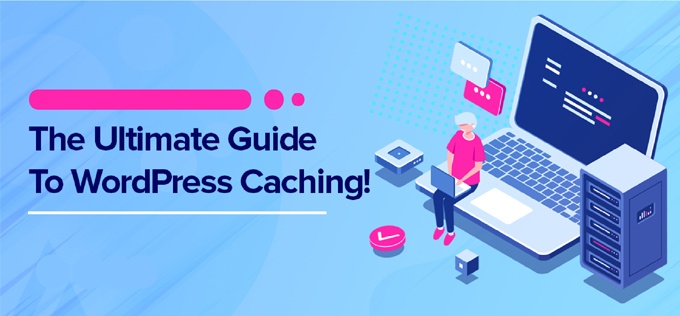In today’s world, there is no reason that any online store owner or website owner need to get fast loading website because it’s good for their business brand also slow website get annoyed for visitors and they can’t stay your site more than 1 minutes and they didn’t return to your website in future. Google search engine also does not rank the slow website.
So it’s important to boost your website page loading speed. You can also visit 10 simple tricks to boost your Website Page Loading speed, Caching is one of them.
Caching is a complex technology to optimize the site performance. It makes websites extremely fast, which leads to better SEO scores and increased user satisfaction.
What is caching?
Caching stands for the process of having frequently-accessed data stored in a cache. It’s a place where data are stored in temporarily. As the visitor lands your website, each time a browser requests a web page, the server has to do a bunch of complex calculations. It retrieves the latest posts, generates the header and footer, finds your site’s sidebar widgets, and so on. Therefore visitors are able to see your website content, for instance, your posts.
In many cases, the result will be the same, In this case, if the server remembers the final result, instead of processing each request separately. Is it a great thing? That is called catching.
Why do WordPress sites need caching?
If you run a WordPress site you can definitely see caching. WordPress provides many plugins that use to affect the speed of your website and make our website perform well. It is important to use the caching technique to make your site load faster.
Types of caching
There are two types of caching protocols. They are:
- Client-Side Caching
As a visitor, you might have found that once the files are downloaded, your browser doesn’t re-download them every time you visit the same website. Browsers store this static information on the client’s hard drive so that the next time this site is loaded, they serve the files from the local cache. The process is client-side caching and almost all websites use it and all browsers support it.
- Server-Side Caching
Server-side caching includes those protocols that a programmer controls through various plugins. These are:
- Page Caching
- Database query caching
- Opcode caching
- Object-based caching
Data must be stored in either server’s hard disk or primary memory to implement server-side caching on it.
Benefits of Caching
- It optimizes your site speed.
- It helps save server memory and I/O operations.
- It leads to higher rankings on popular search engines.
- Cached websites offer a better user experience from an overall perspective, as a faster site helps users browse better and a cached site means that the user’s bandwidth is saved.
Top Plugins for WordPress caching
- WP Super Cache
- W3 Total Cache
- Autoptimize
- SG optimizer (Siteground hosting)
Website speed plays an important role in the overall performance of your website. The best way to make sure your website provides a great user experience and boosts your search engine rankings is to take advantage of a WordPress caching plugin.
There are many caching plugins. Use it based on your requirements and hosting plan. I hope this post is helpful for your website. If you have any query then feel free to contact us. Our experienced developers are ready to solve your query.
Read an article like this…
Top 22 must-have Plugins in your WordPress website
10 simple tricks to Boost your Website Page Loading speed
